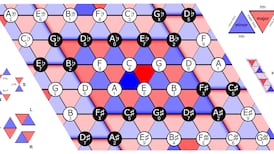We have the highest incidence in Europe of the disease that struck the late Brian Lenihan, writes Dick Ahlstrom
Ireland has the highest incidence in Europe of an inherited disorder that causes a build-up of iron in the body. A team at University College Cork is picking apart the complex biochemistry behind the disorder, which can cause liver cancer and death if not treated.
Hereditary haemochromatosis (HH) is the disease that overcame former government minister Brian Lenihan. His illness helped raise awareness of HH here, states Science Foundation Ireland investigator and biochemistry lecturer at UCC, Dr Mary McCaffrey.
It is a complex disorder that is difficult to diagnose and eventually leads to a huge build-up of iron in the bloodstream, she explains.
We all need some iron to remain healthy, but HH causes a disastrous increase in iron levels. The liver is one of the first organs affected by the excess iron. "If people have the condition it is the single greatest risk factor for liver cancer," says Dr McCaffrey, who works in UCC's molecular cell biology laboratory in the biosciences institute. She is an expert in the biochemistry involved in the transport of materials into and out of cells.
Dr McCaffrey received support from the Health Research Board to fund a post doctoral fellow for a three-year study of HH. The two are unravelling the complex biochemical steps related to a gene mutation that is partly responsible for the effects seen in HH.
HH is linked to a single amino acid change in a protein produced by a gene known as Hfe. While the gene mutation in HH is seen in one in 300 to 400 people across Europe generally, the mutation is much more common here, affecting perhaps one in 80 she says.
Those with the mutation don't always develop HH, but the condition can easily be misdiagnosed as something else, including liver cancer and heart disease, McCaffrey explains. These can emerge over time without the person knowing they have HH. "It is very difficult to diagnose."
Iron is readily available in certain foods and the body absorbs what it needs via a protein known as hepcidin, McCaffrey says. When acceptable iron levels are reached, the absorption slows.
Once in the bloodstream the Hfe protein brings the iron into cells, but in HH the protein doesn't work properly. "The effect of the mutation is the protein is not functional. The result is the individual is unable to control their iron levels."
The challenge is unravelling the interaction between the Hfe and hepcidin proteins, she says. "It is a really complex problem. Why does a protein involved in the uptake of iron affect the absorption of iron?"
The only way to answer the question is to detail where the Hfe protein comes from and where it goes. "We are looking at the localisation of the gene in cells that we culture. We are working on three different mutations and looking at the localisation of the Hfe and the effect it has on the iron uptake into the cells," she says.
"There is likely to be a role for Hfe in sensing iron levels," Dr McCaffrey suggests. "There has to be a link."
She also believes it is extremely important that people are aware of the disease given the numbers of people here who carry the mutated genes and the difficulty in diagnosing HH. "It is a condition the public does have to be aware of."
For further information, see www.haemochromatosis-ir.com.









